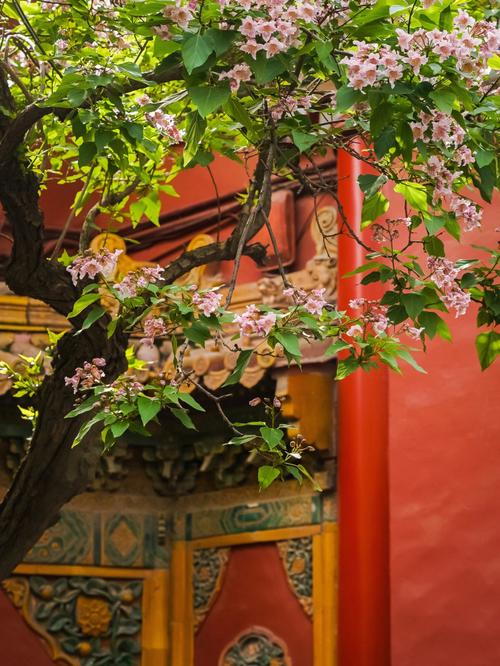
The Cultural Significance of the Imperial Garden
1. A Microcosm of the Empire: Symbolizing Imperial Power and Authority
-
Illustrating Cosmic Order: The Imperial Garden, often designed with careful symmetry and incorporating elements like water and mountains, mirrored the Chinese belief in a harmonious universe ruled by the emperor. This design philosophy underscored the emperor's position as the intermediary between Heaven and Earth.
-
Showcasing Imperial Majesty: The sheer scale, grandeur, and opulence of the garden, from rare plants and exotic animals to magnificent pavilions and intricate landscaping, served as a powerful testament to the dynasty's wealth and the emperor's absolute power.
-
Reinforcing Dynastic Legitimacy: By referencing historical styles, incorporating auspicious symbols (like dragons and phoenixes), and even recreating famous landscapes, the garden served to connect the current dynasty to a glorious past, legitimizing its rule and emphasizing continuity.
2. A Haven for Imperial Life: Reflecting the Rulers' Pastimes and Philosophies
-
A Place of Leisure and Recreation: The Imperial Garden provided the emperor and his court with a space for relaxation and amusement. This included enjoying theatrical performances, musical concerts, poetry recitals, and leisurely walks amidst nature's beauty.
-
A Setting for Diplomatic Encounters: The garden also served as a grand stage for receiving foreign dignitaries and ambassadors. The impressive setting helped to showcase the splendor of the Chinese court and subtly assert its dominance.
-
An Expression of Personal Tastes: Beyond its political functions, the Imperial Garden often reflected the individual emperor's aesthetic preferences and philosophical leanings, offering insights into their personalities and reigns. For instance, some gardens might emphasize scholarly pursuits with libraries and quiet spaces for contemplation, while others might highlight martial prowess with archery ranges and parade grounds.
3. A Legacy of Artistic and Horticultural Achievement: Showcasing China's Cultural Brilliance
-
A Fusion of Artistic Forms: The Imperial Garden represented the pinnacle of Chinese artistry, bringing together landscape design, architecture, sculpture, painting, poetry, and horticulture in a harmonious whole. This fusion of art forms created a multi-sensory experience designed to inspire awe and delight.
-
Innovation in Horticulture and Design: Imperial Gardens often served as testing grounds for new horticultural techniques, introducing exotic plants from far-flung corners of the empire and experimenting with innovative grafting and cultivation methods. This led to advancements in Chinese gardening and the development of unique horticultural practices.
-
Enduring Inspiration for the Arts: The beauty and grandeur of Imperial Gardens have inspired countless works of art, including paintings, poems, and literary works. These artistic representations further disseminate the cultural significance of the gardens, keeping their legacy alive through the ages.
Q&A
Q1: How did the Imperial Garden symbolize the emperor's power?
A1: The garden's design, mirroring the cosmos and showcasing imperial wealth, underscored the emperor's role as the Son of Heaven and ruler of a vast and prosperous empire.
Q2: What were some of the activities that took place within the Imperial Garden?
A2: Activities included leisurely pursuits like walks, theatrical performances, and poetry readings, as well as more formal events like diplomatic receptions and military parades.
Q3: How does the Imperial Garden continue to influence Chinese culture today?
A3: The garden's legacy lives on through its influence on art, architecture, and landscape design, as well as through the preservation of historical gardens that offer a glimpse into China's imperial past.